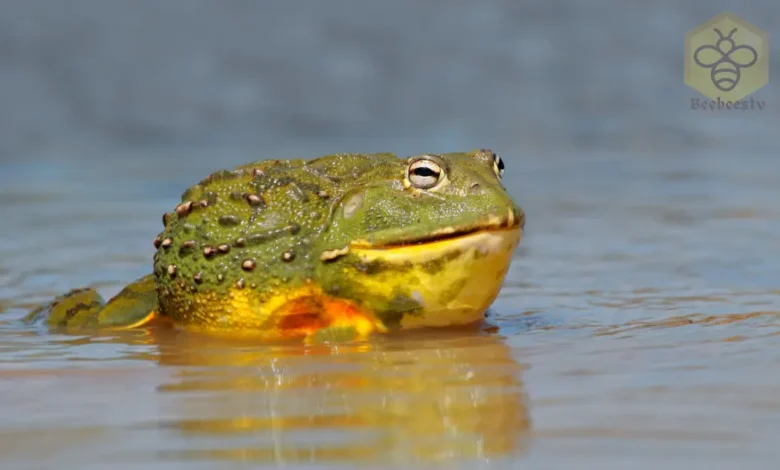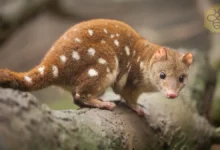African Bullfrogs: The Amazing Giant Amphibians of Africa

African Bullfrogs: The Giant Amphibians of Africa
African Bullfrogs
The African Bullfrog is a fascinating and powerful amphibian native to sub-Saharan Africa. Known for its impressive size and voracious appetite, this species plays a significant role in its ecosystem and showcases unique behaviors that set it apart from other frogs.
Scientific Overview
Scientific Name
Pyxicephalus adspersus
Common Name
African Bullfrog
Scientific Classification
| Kingdom | Animalia |
| Phylum | Chordata |
| Class | Amphibia |
| Order | Anura |
| Family | Pyxicephalidae |
| Genus | Pyxicephalus |
| Species | P. adspersus |
Types
While the main species is the African Bullfrog (Pyxicephalus adspersus), there is also a closely related species, the Pyxicephalus edulis, commonly known as the edible bullfrog.
Habitat and Distribution
Habitat
African Bullfrogs are commonly found in grasslands, savannas, and occasionally in arid or semi-arid regions. They thrive near water sources such as temporary ponds and ditches that form during the rainy season.
Geographic Distribution
The African Bullfrog is widely distributed throughout southern and central Africa, including South Africa, Botswana, Namibia, Zimbabwe, and Angola.
Physical Characteristics
Size and Weight
One of the largest frog species, adult males can grow up to 9 inches in length and weigh over 2 pounds. Females are typically smaller, reaching around 4 to 5 inches.
Appearance
The African Bullfrog has a robust, rounded body with an olive-green back and a pale, creamy underside. It has powerful limbs, a large mouth with tooth-like projections, and a broad, flat head.
Diet and Feeding Habits
Diet
African Bullfrogs are carnivorous and have a diverse diet, including insects, small rodents, birds, reptiles, and other frogs. Their powerful bite enables them to consume a wide range of prey.
Feeding Behavior
These frogs are ambush predators, lying in wait for prey and striking quickly. Their strong jaws and wide mouths allow them to swallow prey whole, which contributes to their impressive appetite.
Predators and Threats
Natural Predators
The African Bullfrog faces predation primarily from larger birds and some mammals. Juveniles and tadpoles are particularly vulnerable to birds, snakes, and larger aquatic predators.
Human Threats
Habitat destruction due to agriculture and urbanization poses a threat to African Bullfrog populations. In some areas, they are also collected for food, impacting local populations.
Reproduction, Babies, and Lifespan
Mating Behavior
African Bullfrogs breed seasonally, typically after heavy rains when temporary pools form. Males congregate and call to attract females, engaging in fierce competition for mating opportunities.
Babies
After mating, females lay thousands of eggs in shallow water, where they quickly hatch into tadpoles. Males often guard the tadpoles, especially in cases of drying pools, where they may dig channels to keep water levels stable.
Lifespan
African Bullfrogs have a lifespan of around 20 to 25 years in captivity and slightly less in the wild due to predation and environmental factors.

Population and Conservation Status
Population Size
The exact population of African Bullfrogs is unknown, though they are relatively common within their range. Population numbers can fluctuate based on rainfall patterns and breeding success.
Conservation Status
The African Bullfrog is currently classified as Least Concern by the International Union for Conservation of Nature (IUCN), though specific local populations may be impacted by habitat loss and collection.
Behavior and Lifestyle
Daily Activities
African Bullfrogs are mostly nocturnal, being active in the evening to hunt and forage. During dry seasons, they burrow into the ground and enter a state of estivation to conserve energy.
Communication
Male African Bullfrogs produce a deep, resonant call during the breeding season to attract females. They can also make distress calls if threatened or handled.
Ecological Role
Importance in the Ecosystem
African Bullfrogs play a crucial role in controlling insect populations and contribute to nutrient cycling in their habitats. As both predators and prey, they are integral to the food web.
Impact on Humans
While generally non-aggressive, African Bullfrogs are sometimes kept as exotic pets. They can benefit agriculture by controlling pest populations, but can also become problematic if introduced to non-native areas.
FAQs About African Bullfrogs
- Are African Bullfrogs good pets?
Yes, but they require specific care and a proper diet.
- How long do African Bullfrogs live?
They can live up to 20-25 years, especially in captivity.
- Do African Bullfrogs need water to survive?
Yes, African Bullfrogs require water for breeding and to stay hydrated.
- Can African Bullfrogs bite?
Yes, African Bullfrogs have a strong bite and can defend themselves if threatened.
- What do African Bullfrogs eat?
African Bullfrogs eat a wide range of animals, including insects, small birds, and even other frogs.
Conclusion
The African Bullfrog is a remarkable amphibian, known for its size, unique adaptations, and resilience in diverse environments. Its contributions to ecosystems and fascinating behaviors make it a subject of interest for herpetologists and enthusiasts alike. As we continue to learn about this resilient species, it’s important to preserve its natural habitats to ensure it remains a vital part of Africa’s biodiversity.


